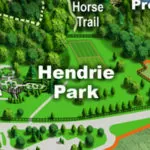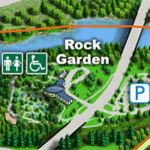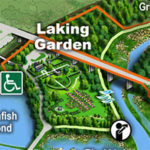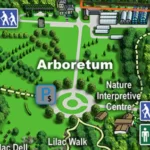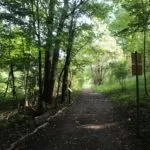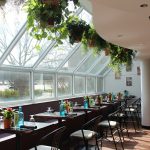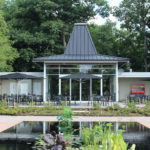| Membership | Price (+HST) |
|---|---|
| Single | $85/year |
| Single Plus | $120/year |
| Family | $130/year |
| Family Plus | $175/year |
| Contributing | $300/year |
| Supporting | $600/year |
| Sustaining | $1,000/year |
| Benefactor's Circle | $2,500/year |
| Director's Circle | $5,000/year |
| President's Circle | $10,000/year |
Flowering Cherry at RBG
Flowering Cherry (Sakura) Collection
Peak Interest: late April or early May
Arboretum, Rock Garden
Flowering cherry trees grace RBG’s gardens with typically white or pink flowered blossoms and have an ephemeral grace and beauty shared by no other type of plant. These trees which at peak bloom look like clouds of pink and white are one the most welcome signs that spring has finally sprung!
At RBG, our flowering cherry blossoms are part of our early spring celebrations. Globally, flowering cherry trees have a long history especially in Japan where the cherry blossoms are celebrated each year. Every year flowering times are recorded and noted and this has occurred for around the past 1300 years. RBG also annually records the flowering times of its Cherries as part of a biological science known as phenology which is an important tool in helping to track climate change.
In 2010, we added 34 trees to this collection donated to RBG as part of the Sakura Project. These trees are planted at both the Arboretum and Rock Garden sites and are a must see in early spring.
Flowering Cherry Bloom Watch
Check back for updates as the flowering cherry collection comes into bloom
Flowering Cherry Collection
Current status: Not in bloom.
Historic Bloom Dates at the Arboretum
Note: bloom dates can vary drastically from year to year. Check back for our “bloom watch” updates.
| Year | Date of Peak Bloom |
|---|---|
| 2024 | April 18 |
| 2023 | April 19 |
| 2022 | May 7 |
| 2021 | April 23 |
| 2020 | May 8 |
| 2019 | May 10 |
| 2018 | May 7 |
| 2017 | April 25 |
| Year | Date of Peak Bloom |
|---|---|
| 2016 | Data deficient (did not bloom at all) |
| 2015 | May 2 |
| 2014 | May 14 |
| 2013 | April 30 |
| 2012 | April 4 |
| 2011 | May 11 |
| 2010 | April 10 |
| 2009 | April 27 |
Plan Your Visit to the Cherry Blossoms
The Arboretum (16 Old Guelph Road, Hamilton) holds the majority of RBG’s Flowering Cherry collection.
PLEASE NOTE: Parking capacity at the Arboretum is very limited; during peak hours it is likely we will not be able to accommodate all who wish to visit. Should the lot be full upon your arrival, we recommend checking out the flowering cherry trees at Rock Garden; see below for more information.
Admission
- Admission does not apply
- Primarily operates as a trailhead to the Cootes Paradise North Shore trails
Parking
- Paid parking is in effect, $5/hr to a maximum of $15.
- Pay by credit or debit upon exit, or pay by credit, debit, or cash at the pay station at the parking circle (near the pavilion).
- Parking is included in RBG Membership. Parking card is required for entry.
Check back for 2025 peak bloom visiting information (Magnolias and Lilacs).
The Flowering Cherry collection is located just south of the Lilac Dell at the Arboretum. See the #5 location on the map below.

Other Locations
Smaller groupings of trees are also located at Rock Garden.
Rock Garden
Find these visitor favourites outside of the Rock Garden Visitor Centre, and a few individuals south of the parking lot.
- 1185 York Boulevard, Hamilton
- Open year-round
- Admission: Garden admission applies. Free with RBG Membership.
- Parking: FREE, available on site
What’s in Bloom?
Blooms are ever-changing in RBG’s four cultivated garden areas and nature sanctuaries. Check back to learn what’s blooming now or see the blooms calendar for a rough estimation of what to expect in a particular season.
Virtual Sakura Tours
About Flowering Cherries
Flowering cherries are deciduous trees with showy, ornamental flowers in spring, oval serrated leaves, with many species or cultivars having good fall colour. Some cultivars are also appreciated for having highly ornamental bark. When planting cherries select a location with full sun and that is open and airy.
Cherries can be prone to wind damage and frost cracking in severe winters so a sheltered site is also advisable. A south or southwest facing situation is ideal. Cherries should be planted in fertile, well-drained soil, rich in organic matter. Many garden cultivars are adaptable to a wide range of soils but avoid planting on heavy clay soils. Pruning techniques should only ever be employed to remove dead, diseased, rubbing or crossing wood. In general cherries are fast growing and in tree terms fairly short lived. Some cultivars may not live beyond 50 years in age
Prunus ‘Accolade’
One of the most iconic spring sights at RBG is the flowering cherry circle in the Arboretum. The trees planted in this circle are Prunus ‘Accolade’ and were accessioned in 1966. P. ‘Accolade’ is a spectacular pink semi-double flowered cultivar that has achieved the Royal Horticultural Society (RHS) Award of Garden Merit (AGM). These trees look most spectacular when viewed against the backdrop of a pure blue sky as the blue provides a stunning contrast to the pink flowers. In some years the additional presence of the moon during the daytime adds extra drama to this spectacular scene. Once the flowers begin to fade and fall the surrounding grassy area looks like it is covered in pink confetti. Prunus ‘Accolade’ is also a bee magnet so a great choice to include in a wild life garden
Prunus ‘Asagi’
Perhaps the most unusual flowering cherry in the RBG collection is located in the grassy knoll at the back of the Rock Garden Parking lot. Prunus ‘Asagi’ is a very rare tree both in Japan and in the West. Asagi translates as “shallow yellow” in relation to the flower colour and it is precisely this trait that makes this cultivar so curious. Most flowering cherries are white or pink whereas this plant has pale greenish yellow flowers which is what makes this cultivar so unusual. Conservation of rare plants such as this is one of the many critical roles undertaken globally by botanical gardens. Saving and securing botanical diversity for the future benefit of all species including our own is critical for the health of our planet.
Colour and Shape
The colour of cherry flower petals can vary considerably with the colour of the same flower changing from first emergence through maturity to blossom fall. Typically flowers are darker in bud becoming paler as they age and expand. Seasonal conditions, climate and soil type can also all have an influence on the annual colour of flowers. Cherry flowers are divided into four different groups which are based upon the number of petals. Whilst nature isn’t always perfect and variations occur as a rule;
- Single flowers have five petals
- Semi-double flowers have between 10 and 20 petals
- Double flowers have from 25 to 50 petals
- Chrysanthemum flowered cherries have more than 100 petals
Japanese Flowering Cherries
The Japanese flowering cherries within RBG’s collection are some of most treasured and appreciated of these trees. These cultivars have been bred for centuries in Japan and play a hugely important role in Japanese society and culture. During cherry blossom time huge festivals are held as Japanese people hold parties and celebrations. The Japanese name the flowering cherry sakura and the art and celebration of viewing sakura is known as hanami (flower viewing) during day time and yozakura (night sakura) at night time. The short lived flowers are particularly important in Japanese culture as a symbol of the ephemeral and impermanent nature of life. The period of blossom fall is particularly important to Zen shrines around Japan where time is devoted to considering the beauty and still quiet of the falling petals. Cherry trees are often planted outside public buildings and schools and as flowering time occurs in April sakura are often associated with start of the financial and school year. By displaying plants from around the world botanical gardens play a rich role in celebrating the different cultural diversity of people from around the world. Look for the RHS AGM cultivars ‘Shirofugen’ ‘Kojo-no-mai’ ‘Ichyo’ ‘Kanzan’ and ‘Miyako’ and have a very happy hanami!
The scientific name for flowering cherries is Prunus. The genus Prunus is in the Rosaceae or rose family. This family not only includes roses and flowering cherries but other notable ornamental plants such as Chaenomeles (Flowering Quince), Crataegus (Hawthorn) Fragaria (Strawberry), Malus (Crab apple) and Pyrus (Pear). As well as flowering cherries the genus Prunus also encapsulates plums, peaches, apricots and almonds. The Rosaceae family, as a result is one of the most economically important crop families.

Support Horticulture at RBG
The care and growth of our horticultural collections are possible thanks to the generous support of RBG Members and donors. With a donation to Royal Botanical Gardens, you can ensure an active, vibrant and healthy future for the children of today and tomorrow through our horticultural and conservation projects.
Royal Botanical Gardens (RBG) is the largest botanical garden in Canada, a National Historic Site, and registered charitable organization with a mandate to bring together people, plants and nature.
More to Do, Naturally
Other Major Collections
As a botanical garden, Royal Botanical Gardens acquires, collects, researches, exhibits, conserves and interprets a living horticultural collection.
Bloom Calendar
Plants of interest are ever-changing in RBG’s five cultivated garden areas and nature sanctuaries. Check back to learn what’s blooming now or see the blooms calendar for a rough estimation of what to expect each season.
Events Calendar
Discover what’s happening in the gardens! Some programs, events, and experiences listed below are included in general admission / membership, while others require separate registration.

